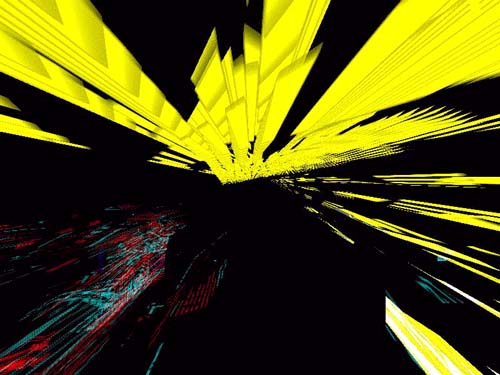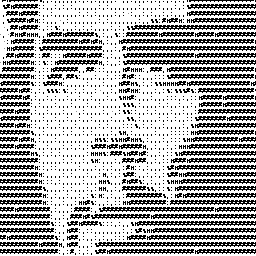 |
| LinX3D Online Application
By Margarete Jahrmann/Max Moswitzer The walk through LinX3D objects is a personal dataset drivethru, user data is displayed as the objects readable texture. It is your skin, your dynamic Netz-Haut. The structural aspect of the internet is rendered in real time. Your actual look is defined by means as logfiles of your chosen destinations, traceroutes of sent datapackages or online spent time. Avatars based on personal online-information - we call datavatars - are an option to stereotype supersexy avatars. According to the operating system somebody is using, different avatar appearances are directly defined. An existing variety of 'Nixes, Shells, Irix, Sun, OS, Linux, Free/Net, BSDees etc. serves as strange last glimpse of a coherent self, the only remaining self-identification factor. Text-based information is imbedded as texture in LinX3D. These avatars are also practicable surveillance and code critique. By an aesthetic experience, the text layer of the net, which is underlying the graphical web, is brought back into the 3rdWeb. LinX3D 3rdWeb game console ASCII face avatars and ASCII login datavatars are
generated in real time at dislocated RL-installation sites. In the
LinX3D Game, the VR users assuming different forms, e.g. datavatars in
ASCII format, and the RL visitors as ASCII FACES, generated by a
linux
ascii video library are presented simultanously on one gameconsole,
the virtual visitors meet up and interact in a common virtual space.
CODING ACTIVISME
Text images, ASCII (inter)faces are generated live by software installed on the Konsum Art_server from video recorded via the console. The faces of the players are the game texts of the KonsumLinX3D console. They serve as textures for the 3D avatars. On the one hand, they aesthetisize the familiar 3D avatars from multiuser online environments, on the other hand ASCII, on the internet, implies a kind of analysis of net ideologies and economies. Immersion, 3D simulation and enhanced real-time experience are one aspect of VR and the game console that corresponds to it. On the other hand, as a newly adapted minimal low tech technology connected to newest webstandards, ASCII transports an additional symbolic value. The ratio of code and text used to represent 3D on the net is becoming increasingly topical as a result of new net standards subsumed under the concept of X3D, the new vrtp . Toys n´Noise - Joysticknations - Video game
culture
The contemporary reality in which contemporary art takes place is
constituted at network interfaces. The arcade-style game console (video
arcade) as a social meeting place in so-called real life is one interface
situation. It serves to symbolically transfer technology and its social,
political, emotional and psychological tensions. Video games accustom us
to media environments, computers, interfaces and user menus. Metaphors
from the realm of science fiction and models and metaphors for the WEB3D,
the next generation of the net, are tested in a playful manner. We provide
almost unlimited life-time and become unpaid beta-testers of these new
interfaces.
|
